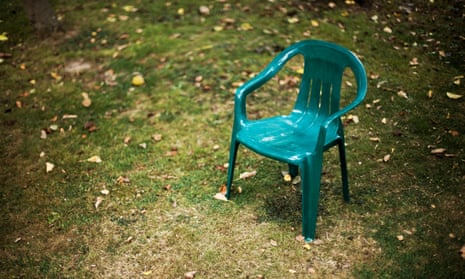Long-lived short fiction magazines are a rarity today. And ones that have had a real impact on the wider landscape of storytelling are even rarer. So issue 50 of Black Static marks a important milestone for editor Andy Cox and TTA Press, who are responsible for two of the world’s most significant outlets for short fiction.
The Third Alternative was already a well-established showcase for stories that moved between sci-fi, fantasy and horror themes when Andy Cox took ownership of the legendary science fiction publication Interzone. With Interzone’s strong focus on SF, Cox made the decision to refocus TTA on horror, and rebrand it as Black Static.
There’s no shortage of here-today, gone-tomorrow horror ’zines on the web, most focusing on gory pulp thrills. But in common with other editors such as Peter Crowther at PS Publishing or Anne Vandermeer at Weird Tales, Cox’s Black Static has always sought to contrast horrific and fantastic imagery with the profoundly ordinary.
There are two reasons to shatter ordinary reality with extraordinary events. One is to comfort the reader when you reassert a quotidian. The other is to create an uncomfortable reminder that reality, even comfortable suburban reality, is transitory and fleeting.
The standout story in the 50th issue of Black Static is White Rabbit by Georgina Bruce. It opens with an old man reading in the garden, while inside his wife of four decades takes her last breath. Grief sends the old man into his own final decline, as his mind increasingly fails in the task of constructing a coherent reality. His daughters are forgotten and his wife returns as a furious clacking monster made of household objects. Bruce’s storytelling, like much of the best Black Static has to offer, is all about undermining our faith in the ordinary.
Simon Bestwick’s horror stories are perhaps the most engaged with ordinary British life of any horror writer working today. A showcase interview in Black Static #50 reveals Bestwick as a writer whose inspiration is less likely to come from abstruse metaphysical concerns than from a simple bus journey across Salford.
We’re on the bus, up from Manchester through Salford to Bolton, on our way to go camping in Kearsley. We piled on at Victoria Station – we’d all been in the square between it and Chetham’s music school. It’s where all the kids like us’ll go – the moshers, the punks, the greasers and the goths.
All the ones like me and Biff.
I’m Emily. That’s me there, stood on the luggage rack and waving all in black, fishnet fingerless gloves, black eyeliner, black hair with gold streaks. Bit merry on blue WKD. I think I look pretty cool.
I had to read the opening chapter of Simon Bestwick’s Angels of the Silences twice – it could have been clipped from my own teenage memories – and I would guess the same is true for many British horror readers. Emily and Biff are those two girls you found in every goth club in the 90s. Except for being dead of course.
Bestwick is brilliant at capturing an ordinary Britain made up of cheap cafes, Bacardi Breezers and over-applied eyeliner. A working-class Britain, in our class-confused age, that’s rarely reflected in mainstream culture, but finds its expression in horror fiction, in large part because of editors like Andy Cox.
Ramsey Campbell, one of the all-time greats of British horror writing, has seen the field change over many decades to take on working-class life. “In MR James, such characters were comic caricatures in the Dickensian tradition, but James Herbert’s early work gave working-class experience an authentic voice, based on his own life.”
Campbell names Bestwick, Gary McMahon, Alison Littlewood and Joel Lane among the contemporary British writers developing a “consciously political form of horror fiction, using the genre to examine and symbolise Thatcher’s Britain and the country’s subsequent decades”. It’s telling that in the midst of the skyrocketing inequality initiated in the 1980s, it’s through the grassroots form of horror fiction that some creators are finding space to express the new reality.
Campbell’s own writing takes much of its life from the most ordinary things – “in human gullibility, in the vulnerability of children, in how too many folk seem willing to embrace beliefs that offer all the answers so long as you don’t question” – all of which can be found in early works like Demons by Daylight and The Nameless.
Black Static, and the ordinary British horror it has helped to develop, may never gain the attention of literary bestsellers such as David Mitchell’s Slade House. But there’s an authenticity to the work of authors like Bestwick, Bruce and many others in UK horror that comes from being a few steps closer to the ordinary world that their horrifying visions seek to tear apart.

Comments (…)
Sign in or create your Guardian account to join the discussion